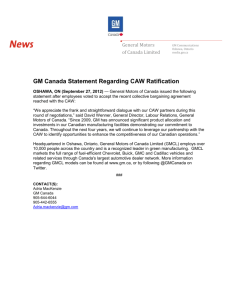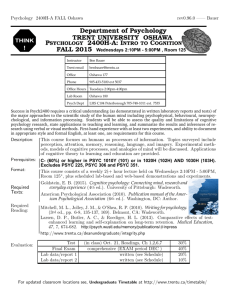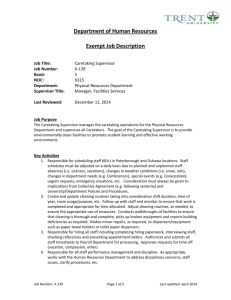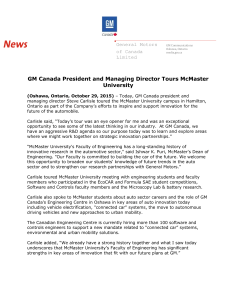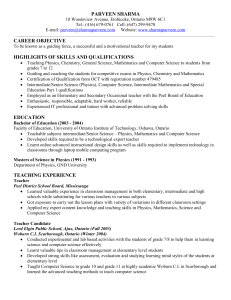Regional Assessment Commissioner, Region No. 12 v. Oshawa
advertisement
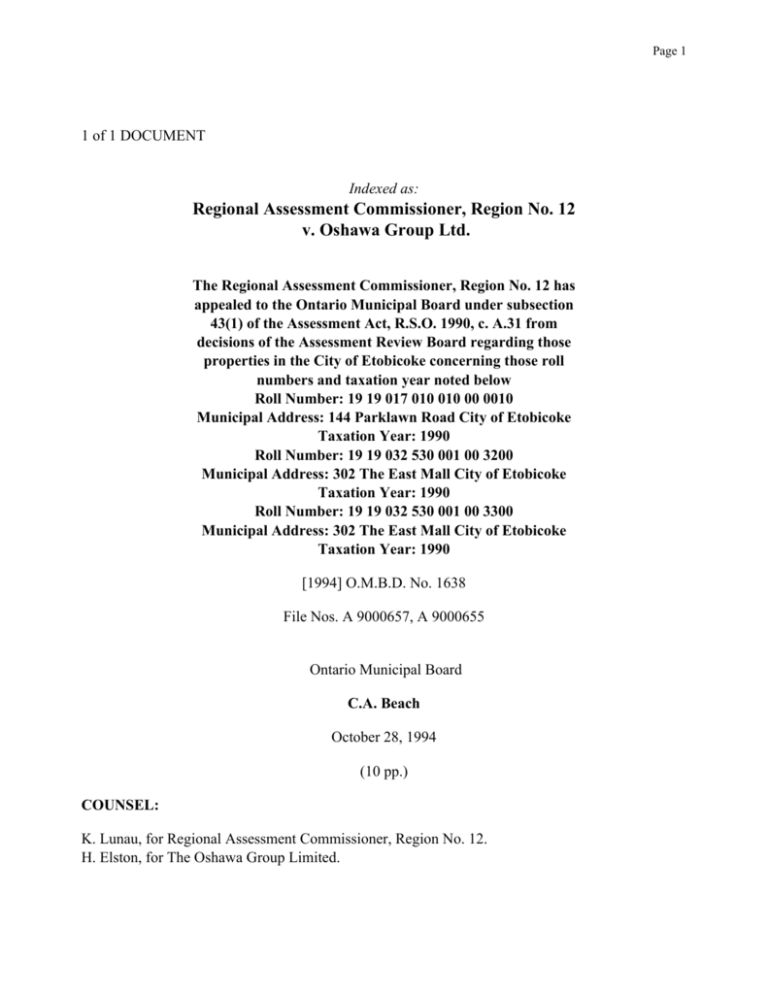
Page 1 1 of 1 DOCUMENT Indexed as: Regional Assessment Commissioner, Region No. 12 v. Oshawa Group Ltd. The Regional Assessment Commissioner, Region No. 12 has appealed to the Ontario Municipal Board under subsection 43(1) of the Assessment Act, R.S.O. 1990, c. A.31 from decisions of the Assessment Review Board regarding those properties in the City of Etobicoke concerning those roll numbers and taxation year noted below Roll Number: 19 19 017 010 010 00 0010 Municipal Address: 144 Parklawn Road City of Etobicoke Taxation Year: 1990 Roll Number: 19 19 032 530 001 00 3200 Municipal Address: 302 The East Mall City of Etobicoke Taxation Year: 1990 Roll Number: 19 19 032 530 001 00 3300 Municipal Address: 302 The East Mall City of Etobicoke Taxation Year: 1990 [1994] O.M.B.D. No. 1638 File Nos. A 9000657, A 9000655 Ontario Municipal Board C.A. Beach October 28, 1994 (10 pp.) COUNSEL: K. Lunau, for Regional Assessment Commissioner, Region No. 12. H. Elston, for The Oshawa Group Limited. Page 2 DECISION delivered by C.A. BEACH AND ORDER OF THE BOARD:-At issue is the correct business assessment to be assessed against the Oshawa Group Ltd. (Oshawa) at 302 the East Mall, Etobicoke. The parties agree that the Oshawa premises at 144 Park Lawn Road should be assessed at 50% pursuant to subsection 7(1)(e) of the Assessment Act, R.S.O. 1990, c. A.31 (the Act). The Regional Assessment Commissioner (RAC) contends that Oshawa should be assessed at 75% in accordance with subsection 7(1)(c) of the Act which states: "The business of selling or distributing goods, wares and merchandise through a chain of more than five retail stores or shops in Ontario, directly or indirectly owned, controlled or operated by the seller or distributor, for a sum equal to 75 per cent of the assessed value of the land occupied or used in the business for a distribution premises, storage or warehouse for the goods, wares and merchandise, or for an office used in connection with the business." Oshawa contends that they should be assessed at 30% in accordance with the omnibus provisions of subsection 7(1)(k) of the Act which states: "Any business not specially mentioned before in this section, for a sum equal to 30 per cent of the assessed value of the land so occupied or used." The Board in determining the appropriate level of assessment, whether under subsection 7(1)(c) or 7(1)(k) must do so in the context of Section 7(1), the opening section to 7(1)(c) and 7(1)(k). This opening section ties the assessment to the occupation and use of land. In part, it states: "....every person occupying or using land for the purpose of, or in connection with, any business mentioned or described in this section,...." (Board's underlining) From the evidence adduced and the submissions of counsel it is clear to the Board that Oshawa's premises located at 302 The East Mall is not used for selling, distributing or storing of goods, wares and merchandise. Therefore, the determinant issue of this appeal is posed by the following question. Are the premises, located at 302 The East Mall, Etobicoke used as an office in connection with the business described in subsection 7(1)(c) of the Act? The Board will now review the evidence of the nature and character of Oshawa. It is Page 3 described on page 1 of its promotional brochure (Exhibit 7) as: "a Canadian Company that grew from a stall in the bustling old Toronto fruit and vegetable market into one of the nation's largest distributors of food, pharmaceuticals and general merchandise." It operates in nine provinces and its 1992 sales surpassed $9 billion dollars. The breadth and width of its operation is best described on page 3 of Exhibit 7, its promotional brochure: "The Company began the 1990s with sales of approximately $5 billion, and was supplier to 500 IGA franchise markets, 384 other franchise units, 1,658 convenience stores, 24 cash and carry and 5,274 non-affiliated food stores while operating 99 company-owned supermarkets, 51 department stores, 152 drug marts, 25 pharmacies, 48 restaurants and snack bars and 10 gas bars." The organisational structure of Oshawa is typical for a diverse company of its size. The structure consists of some 18 separate divisions representing Oshawa's diverse interest in the food, pharmaceutical and general merchandise areas. Food wholesale and retail divisions accounted for 86.2% of its 1992 consolidated sales. No evidence was offered that the predominance of the food wholesale and retail divisions was different in 1990. Of the 18 divisions, only 6 are not incorporated. Although counsel tried to lessen the importance of Oshawa's promotional material filed as Exhibit 7, and the way Oshawa describes itself in its 1992 Annual Report filed as Exhibit 8, it is difficult for the Board to accept that such a large and important company, in public documents, would mislead the general public or falsely represents itself. Therefore, on the inside of the cover of its 1992 Annual Report (Exhibit 8) where it states: "For more than half of its 80-year history, Oshawa's wholesale divisions have served grocers trading under the IGA store banner"; it sees its affiliated companies as "divisions" and makes a link between its divisions and itself. At page 4 of Exhibit 7 it states: "Oshawa's wholesale and retail food divisions supply franchised markets, convenience stores, cash and carry units, non-affiliated independents and Company owned supermarkets...". Again, the link between Oshawa and its divisions are established. Mr. P. Connell, who until he retired in 1992 was Oshawa's Chief Financial Officer, in describing the decentralised approach of Oshawa, described the "food business" as a "penny business" which requires on the spot cost control. As a result, each division has control of its day to day management in order to react quickly to the peculiarities of the market it serves. Therefore, each division is autonomous to the extent that it improves the efficiency of that particular division and adds to the profitability of Oshawa. Mr. Connell described Oshawa as a head office responsible for overseeing its investments. However in its brochures it does not describe itself as an investment company. It describes itself as one of the nation's largest distributors of food, pharmaceuticals and general merchandise. It is Page 4 predominantly in the "food business" which is a term used by Mr. Connell. Any doubt about this is dispelled by its 1992 Annual Report (Exhibit 8) which states that 86.2% of consolidated sales were derived from its food wholesale and retail divisions. And, although it is true that Oshawa acquired and divested itself of companies it did so not because it was in the investment business but because it provided "growth opportunities while balancing its geographic asset base". As an example, General Motors and the Ford Motor Company if they acquire other companies related to the auto industry would not be described as investment companies. Their predominant business is manufacturing cars and these companies are described as being in the car manufacturing business. Oshawa, with respect to acquiring or divesting itself of other companies, is no different. It is in the "food business". Counsel, in their submissions cited cases which in their opinion support their respective positions. The Board, in its review of the cases cited, notes that none of the cases cited fit the matters before it like the proverbial "well fitting glove". Besides, most of the cases cited deal with the relationship or linkage for taxation purposes between subsidiaries or divisions of a company with their main operation or head office. The issue being whether for taxation purposes can the subsidiary or division be considered as part of the main operation. The matter before the Board is the reverse of this. Here, the board is dealing with the relationship of a head office with its divisions or subsidiaries with respect to taxation. The issue being as previously stated. However, the Board does not intend to minimise the importance of the cases cited. These cases have established important principles against which evidence can be tested. In the following passages the Board discusses the relevant principles against which the evidence will be tested. Although counsel for Oshawa described Re Hiram Walker & Sons Limited and Town of Walkerville (1917) as old law, in the Board's opinion the learned judge, Meredith, C.J.O. in his judgment at p. 156 of 40 O.L.R. laid down an enduring principle with respect to the relationship of one part of a business to another part for taxation purposes. He reasoned that in a distillery, the distillation process for taxation purposes cannot be treated differently than the blending and storing of the product of distillation. They were all part of the same process. His reasoning was as follows: "The case was argued by Mr. Anglin as if the legislation imposed taxation in respect of a "distillery." The question in such a case would be a very different one from that which arises when the taxation is in respect of "the business of a distiller." The court cannot, I think, know judicially what such a business is, and the question of what it is must therefore be a question of fact. I do not think that there can be any reasonable doubt that, where it is shown that a distiller, in addition to distilling, warehouses the product of distillation and also blends liquors from the process of distillation and warehouses these liquors, the business of distiller as used in the clause may embrace all these branches of the business." This principle, "the business of a distiller", runs like a thread through a number of the cases Page 5 cited by counsel for the RAC. Another important principle which the Board is of the opinion is pertinent to the matter before it, was laid down in the Judgement of Henderson J.A. Toronto v. Lever Brothers [1942] 3. O.L.R. At page 472 the distinguished judge reasoned: "What is necessary under s. 8 of the Assessment Act (as it then was) is to determine the real character of the business for the purpose of which the land is occupied or used. It may be necessary in some cases to look beyond the activities upon the premises to ascertain the real character of the business." (Board's underlining and fine print) In Re United Trust Co. et al. and City of Toronto et al. 11 O.R. (2d), Fraser, J. in determining whether an assessment was to be based on the use of premises for trust company purposes or for real estate purposes referenced a number of cases including Hiram Walker & Sons Ltd. and Town of Walkerville [1917] in his decision. At page 328 he reasoned as follows: "...What governs is the character of the business carried on by the person who occupies the land, not necessarily what is done on the particular parcel if it is used for the purpose or in connection with the business of the occupant." (Board's underlining) In Re Kitchener-Waterloo Real Estate Board Inc. and Regional Assessment Commissioner, Region No. 21 et al, 56 O.R. (2d), at page 138 Campbell, J. in determining whether the premises of a Real Estate Board are occupied or "used for the purpose of, or in connection with any business", included as part of his reasoning the following: "The long answer is that even if the occupation here is not "for the purpose" of a profit making-making business because the board itself does not make a profit, the occupation is "in connection with" the profit-making business of individual members. The respondent suggests that the words "in connection with" are broader than the words "for the purpose of" and says that even if the activity is not caught by the latter it is caught by the former. This is an accurate interpretation of the plain meaning of the words of the statute. The word "connection" simply means that there is some relationship between two things or activities - that they have something to do with each other. The relationship need not be purposive to constitute a connection..." (Board's underlining) Counsel for Oshawa cited a passage from page 75 of the Ontario Property Tax Assessment Page 6 Handbook which in his opinion is indicative of and supports his position. It states: "The manufacturers rate of business assessment will not be applicable to a division of a parent corporation that is fully capable of existing on its own and is not dependent on the parent corporation. Some of the factors that might be indicative of whether a division is independent of its parent would be if there are any internal purchases, if it sets out its own budget, hires and fires its own staff, manages its own sales or bids for contracts all without intervention of the parent." (Board's underlining) It is clear from the evidence adduced that Oshawa does intervene in the business of its divisions. It operates their payroll and pension plan, it approves their annual budget, no major investment can be made by divisions without the approval of Oshawa, and more telling, the manager of each division is appointed and can be fired by Oshawa. In the Board's opinion, given the facts stated above, it cannot be said that the divisions are operationally completely separate from Oshawa. The matter before the Board is therefore different to Re Aluminum Co. of Canada Ltd. et al. and regional Assessment Commissioner, Region No. 5 et al. cited by counsel for Oshawa and found in 54 OR (2d) at page 251: "...the Alcan International operating at the Kingston Laboratory is legally and operationally completely separate from the other Alcan undertakings in the City of Kingston." (Board's underlining) The finding of the Board is that the divisions are not operationally completely separate from Oshawa. Based on the principles established in the cases cited above, when one looks beyond the premises of Oshawa one finds a network of divisions either in food wholesale or retail, pharmaceuticals and general merchandise with operational links to Oshawa and with reference to Re Hiram Walker & Sons Limited and Town of Walkerville quoted earlier, can be said to be in the business of "food wholesale and retail" which is its preponderating business. Further, the Board finds that the Oshawa premises are for "the purpose of" and "in connection with" the business of its divisions. The Board, therefore, allows the appeal by the Regional Assessment Commissioner, Region No. 12 and orders that the business assessment for roll number 19 19 032 530 001 00 3200 and 19 19 032 530 001 00 3300, 302 the East Mall, City of Etobicoke be assessed at 75% pursuant to section 7(1)(c) of the Act and roll number 19 19 017 010 010 00 0010, 144 Parklawn Road, City of Etobicoke be assessed at 50% pursuant to section 7(1)(e) of the Act for taxation year 1990. Page 7 MOTION At the outset of the hearing, counsel for the RAC moved a motion requesting an adjournment of the hearing. The principal grounds for the motion were: 1. 2. 3. there has been no discovery, or waiver of discovery; witness statements and expert reports have not been exchanged; a certificate of readiness has not been filed. After listening to submissions from counsel, the Board found that each was partly responsible for the non-exchange of documents. However, the Board, with the agreement of counsel, resolved the matter by adjourning the hearing until the following day so that documents could be exchanged. C.A. BEACH, Member d/swh
